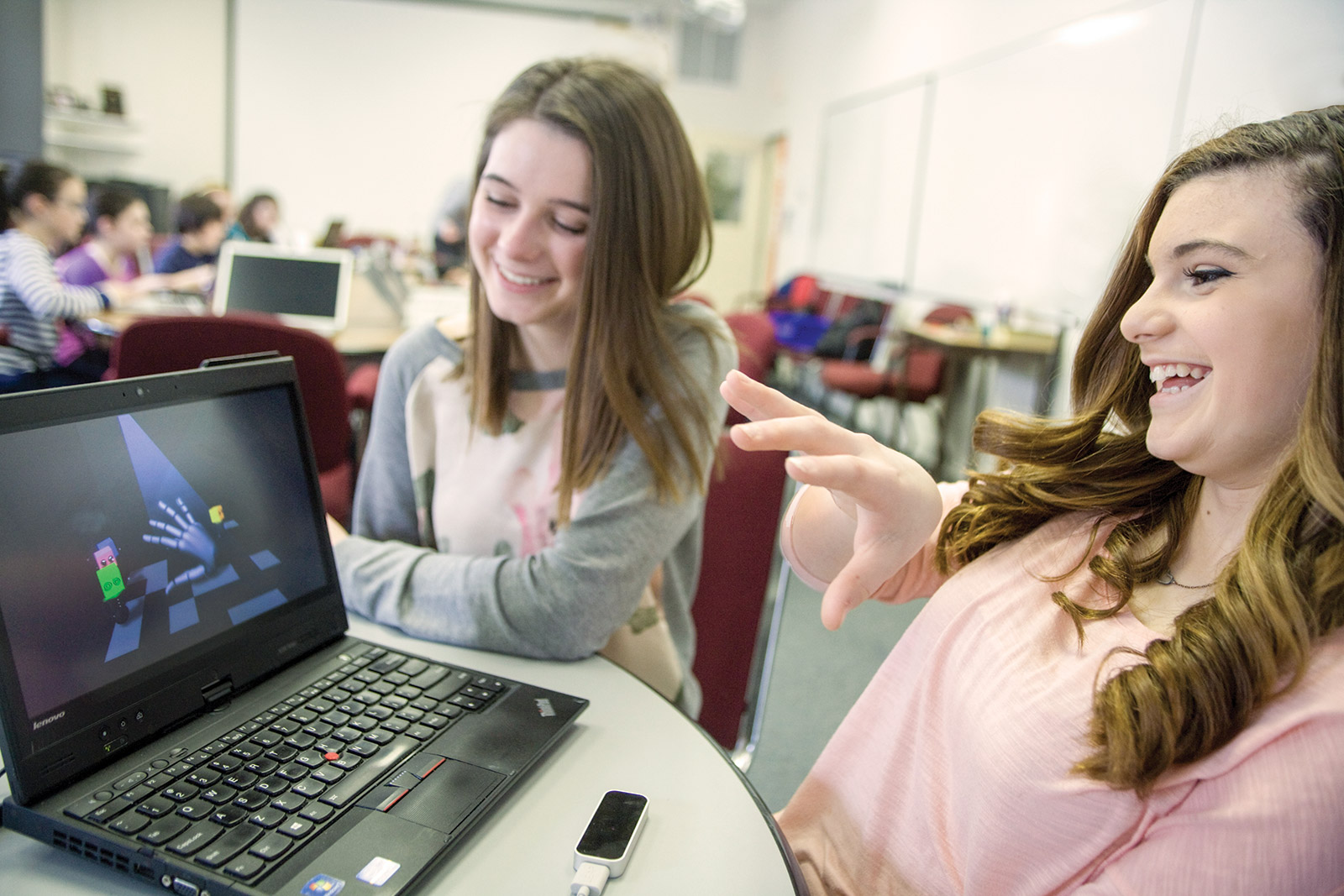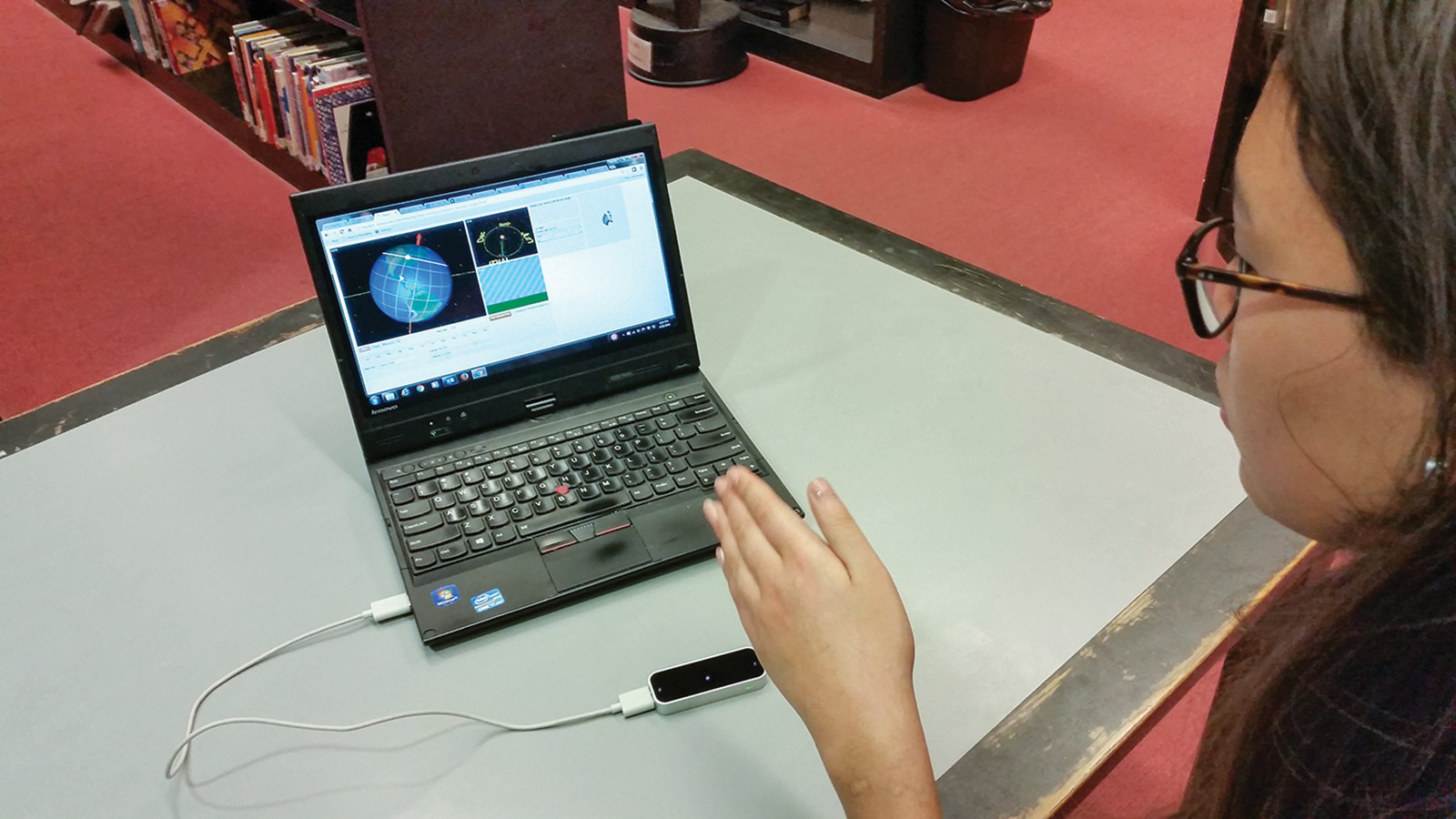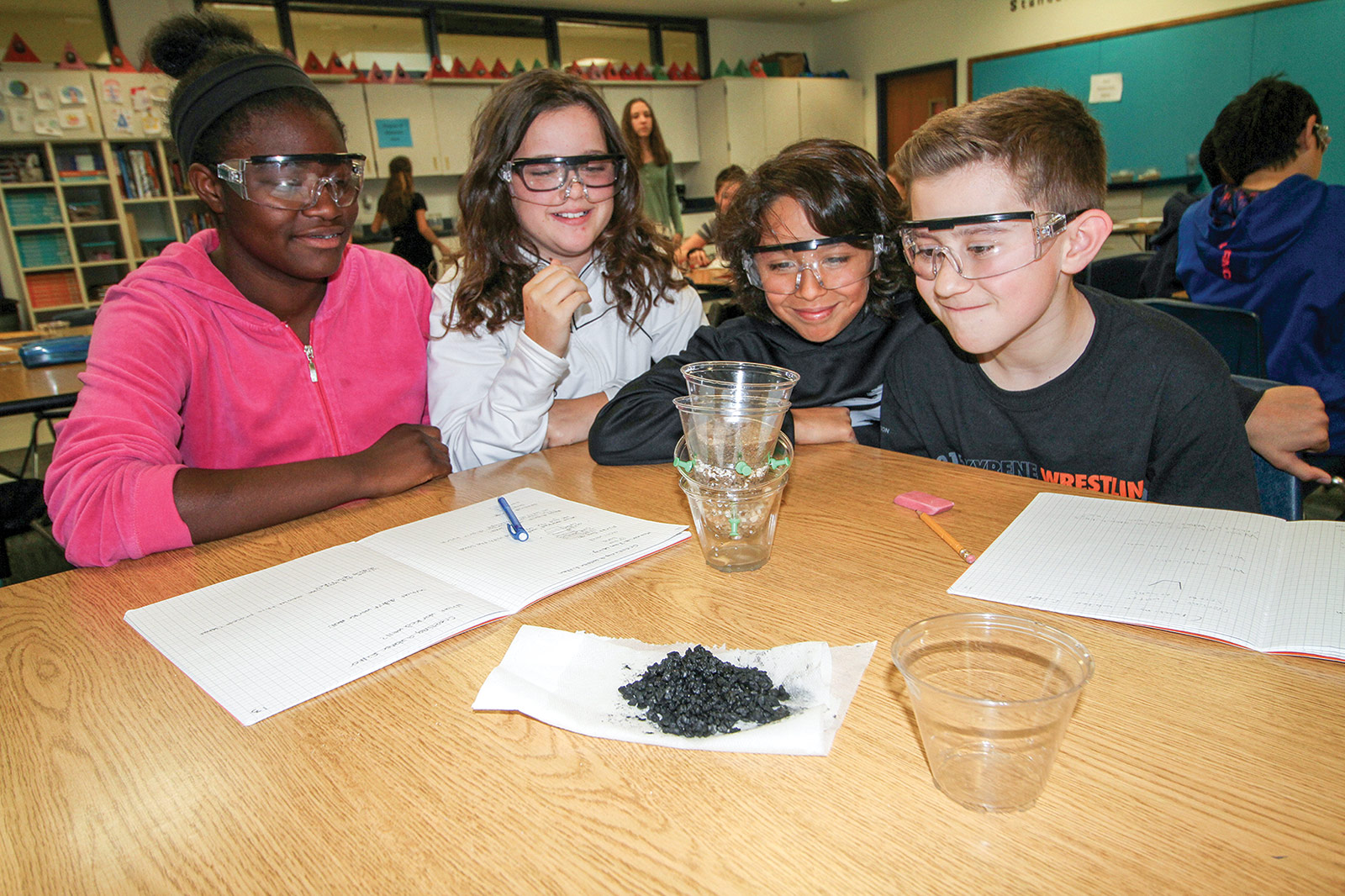GRASPing Invisible Concepts, Can a Robot Help Students Write Better Scientific Arguments?, Supporting Secondary Students in Building External Models to Explain Phenomena, and more in Spring @Concord
Perspective: New Horizons: Ushering in a Transformative New Technology Era
At the Concord Consortium, we’re always on the cutting edge of STEM educational technology. Sometimes that cutting edge feels razor sharp. This is one of those times. We are very close to seeing current capabilities and long-term potential converge in ways that will radically open up the technology landscape and accelerate the development of an immense range of activities.
GRASPing Invisible Concepts
"Hand waving" is often used to characterize a nebulous explanation that's short on details. But could the literal waving of hands—or other gestures and movements of the body—be key to the process of reasoning about scientific concepts? The notion that human cognition is rooted in the body is not new, and a growing research effort is emerging to test the idea. So, how can we determine the relationship between body motion and learning? If we uncover a relationship, can we use that knowledge to enhance learning? Finally, is it possible to use discoveries from this research to create learning environments using body motion to help students build better mental models of difficult concepts?
Monday’s Lesson: Can You Filter Your Water?
Although improved water supply and distribution are two of the great engineering achievements of the 20th century, the National Academy of Engineering lists "access to clean water" as one of its current worldwide challenges. Learn how we're helping middle school students investigate local water resources and learn about careers in environmental conservation and engineering.
Can a Robot Help Students Write Better Scientific Arguments?
What if students were able to get immediate feedback on their open-ended responses in science class? Could that dramatically enhance their ability to write scientific arguments? A new project is exploring these questions by investigating the effects of technology-enhanced formative assessments on student construction of scientific arguments.
Supporting Secondary Students in Building External Models to Explain Phenomena
Modeling, a central practice used in all science disciplines, is essential to the pursuit of scientific knowledge. Scientists develop, revise, and use models of relationships between variables to provide a predictive or causal account of scientific phenomena; engineers build models to test and revise design solutions. The Framework for K-12 Science Education and the Next Generation Science Standards (NGSS) identify modeling as one of eight science and engineering practices. Indeed, students should engage in modeling to learn and use the same practices scientists and engineers regularly employ. However, there are few tools designed for students to easily construct models, so there is little research on how the use of a modeling building tool could affect the way students develop conceptual frameworks related to scientific phenomena.
The Challenge of an Open-Ended Design Challenge
During China’s notorious three-day national college entrance exam you hear prayers everywhere. My life—indeed, every high school student’s life in China—would be different following the exam, or so we were told. The physics test was on the hottest day. A couple of useless fans sputtered above, pitying us. I swept through the test and felt good—until the last question. After reading it three times, my heart was pounding and my brain was numb. The question included a complex machine I had never seen. Decompose and find the equations, I told myself. Divide and conquer. I scribbled all over the margins, yet the solution kept falling apart. The clock was ticking.
Under the Hood: Creating Multi-User Activities with Firebase
In educational technology research, we increasingly see the value of connecting users to collaborate on a difficult problem or to compete against each other in a game. Our Teaching Teamwork project, funded by the Advanced Technological Education program at the National Science Foundation, is investigating the use of online collaborative activities for evaluating the contribution of individual team members as they work together to solve simulated real-world electronics problems on separate computers linked by the Internet.
Innovator Interview: Jie Chao
Meet the Concord Consortium's new learning scientist, Jie Chao. Learn about her work on the Mixed-Reality Labs project, how she uses learning analytics, and more.
News at Concord Consortium
The latest news from the Concord Consortium in spring 2016: New Support for Learning Everywhere Initiative, Fathom Dynamic Data Software, High-Adventure Science Partnership with National Geographic Education.






